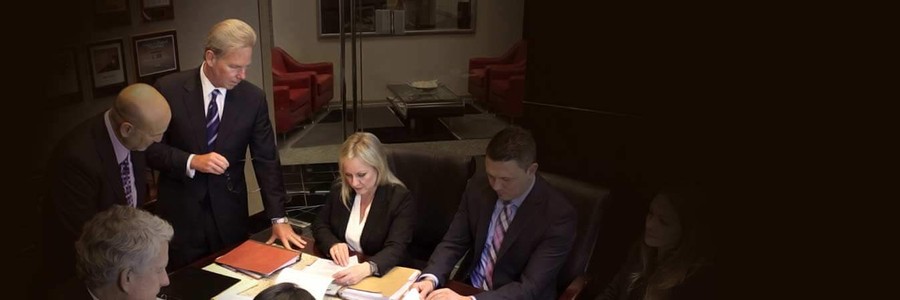The Crippling Truth about Second Impact Syndrome
Second impact syndrome is classified to be a greater, severe head injury that occurs when a concussion that was experienced before was not fully healed. Cerebral swelling is quickly induced which causes an immense amount of intracranial pressure. It can also shift parts of the brain and even worse - it can cause the brain to bleed which ultimately can lead to death.
Each year over 1.7 million people suffer from traumatic brain injuries and over 52,000 people lose their lives reports the CDC.
What's even more shocking is that second impact syndrome is experienced primarily among high school and college athletes. Young athletes involved in contact sports such as boxing, football or hockey have fallen victim to the condition. Second impact syndrome has been a leading concern across America, so concerning that in 2009 Governor Christine Gregoire established a law that prohibits young athletes from participating in a game or practice if they have suffered a prior concussion.
Second Impact Syndrome & The Lystedt Law
The boy who inspired law makers to take action was Washington-state native Zackery Lystedt. During an intense football game 13-year-old Zack suffered a severe blow to the head. Like most football players though, sitting out of a game was not an option. Instead Zack returned to the game and after, experienced a second head injury leading him to fall victim to the condition known as second impact syndrome.
It would be 13 months after experiencing second impact syndrome that Zack would be able to speak.
Research has concluded that over a 13 year period, a staggering 94 cases of traumatic brain injuries that led to irreparable head trauma had been experienced and that's not all. Of those cases, over 71% of high school and college athletes were the main sufferers of these traumatic brain injuries.
Unfortunately Zack's case is not the last of the second impact syndrome stories.
All-star football player Preston Plevretes suffered from a second concussion when playing college football which led him to have half of his skull removed. Max Condradt, now 26 years old, has a difficult time remembering how to perform daily tasks due to the second impact syndrome he experienced in high school.
Even though all three experienced second impact syndrome, over months and years of hard work they are now able to speak and walk.
Second Impact Syndrome vs CTE
Both traumatic brain injuries differ in one way: time. Second impact syndrome is a head injury that can damage the brain instantly. However with CTE, the disease wears on the brain over time.
CTE also known as Chronic Traumatic Encephalopathy diminishes the brain throughout a lengthy period of time. Brain cells are killed off due to a protein called Tau -- forming and attacking the cells in clusters. The disease has been found in patients as young as 17. There are ways to detect CTE early on in its development.
10 signs and symptoms of CTE can include:
- Sudden violent behavior
- Difficulty remembering
- Diminished sense of smell
- Complications with swallowing while eating
- Depression
- Withdrawn
- Erratic behavior
- Thoughts of suicide
- Temperamental
- Trouble focusing
As of right now there is no treatment or cure for CTE. For second impact syndrome, recovery is found in treatment.
Treatment and Recovery for Second Impact Syndrome
Second Impact Syndrome can be deadly. Most who fall victim to this condition lose their lives in a matter of minutes. If they survive there can be serious deficit in cognitive abilities. Second impact syndrome has a 50% mortality rate and being mentally disabled is a 100% probability.
".... it has a devastating effect on those involved. Those who do survive second impact syndrome are neurologically devastated. They often spend many weeks to months in a coma. Many times they have a hole cut in their neck through which a permanent breathing tube is inserted. They are hooked up to a machine to help them breathe. They receive all of their nutrition intravenously as they are not awake enough or alert enough to eat or drink", states Dr. William P. Meehan III the Director of the Sports Concussion Clinic
Initially, once the patient has been admitted to the hospital the main priority of medical professionals would be to control the airway. A CT Scan must be conducted to confirm that the brain is experiencing pressure. Once this is confirmed the objective would be to "normalize" the high amount of pressure that is preventing blood or fluid to flow through the brain.
Possible treatments include surgery, diuresis, blood vessel control or fluid restriction.
Prevention comes in awareness. It is highly encouraged that schools and universities inform students who participate in sports of the risks that come with contact sports. Educational institutions can prevent SIS by setting a clear standard of after care regarding sport related concussions.
It should also be reiterated that an athlete returning to play has an increased risk for a traumatic brain injury.
The reason being is if the first concussion is not healed and experiences of trauma a second time can be fatal. If you are an athlete and you return to play minutes after the injury you can experience some serious repercussions. Symptoms include loss of consciousness, collapsing seconds after experiencing the head trauma and immediate hemorrhaging of the brain.
If the victim of second impact syndrome survives it can be days or weeks before they regain consciousness.
Who Is Liable for a Second Impact Injury or CTE?
Is the school liable for the injuries of an athlete? The general answer is no, but there are certain factors to consider if you are willing to take a school or university to court.
Intent and Negligence: If a child was hurt intentionally by a coach or trainer in sports medicine, if there is proof that the school failed to protect a student that was being abused, then the school is liable for injuries. This is referred to as an intentional tort.
Determine the Negligence of the School: Below are examples of different types of negligence of a public or private school.
- A child is hurt on a playground due to lack of supervision.
- Several students are injured in a bus crash because of the improper training of a bus driver.
- A group of children have suffered from food poising because of unsanitary food preparation.
- Inadequate sports equipment contributed to severe injuries of an athlete.
Public vs Private: The type of institution you are going up against does matter. If you are suing a public school the institution is considered a government entity which means there are tight procedures set in place. You must follow these procedures properly when beginning the case.
Medical Mal Practice Among Athletes
Athletes in college football and the NFL are pressured to play even when they have suffered a concussion or other severe injuries. Can coaches, trainers or team physicians be liable for devastating brain injuries such as second impact syndrome?
One case that has been famously known to the set the standard of care for athletes was Searles v Trustees of St. Joseph College .
Paul Searles received an athletic scholarship to play basketball at the University of St. Joseph College in 1988. Searles who was a freshman, claimed to have severe pain in his knees and was soon diagnosed with patellar tendinitis. When Searles presented this information to his basketball coach and athletic trainer both insisted he continue to play.
Searles stopped participating as an athlete due to the surgeries he had to endure soon after the diagnosis. His knees have been permanently damaged due to him returning to play before he had healed.
The court had made it clear that schools should provide reasonable care for their athletes. It has not been clarified what "reasonable care" is nor has there been a standard for athletic and school physicians to uphold other than a duty ot provide reasonable care.
Other Unexpected Causes of Second Impact Syndrome
The brain is described to have the same consistency of gelatin making it one of the most fragile organs of the body. The head does not provide protection from extreme blows to the brain.
4 causes of traumatic brain injuries:
Car accidents: Fifty percent of traumatic brain injuries are caused because of an auto accident. Not only that, but an estimated 1.3 million people die annually because of automobile accidents. Distracted driving is the number one cause for car crashes. Texting or talking on the phone is not only illegal but it can also cost you your life.
Slip and falls: It may seem small, but over 8 million people are admitted to the hospital each year because of falling. Slip and falls make up most of the workers compensation claims as well. The culprit? Well, it turns out to be slippery floors.
Domestic abuse: Physical violence is the most down-played cause of traumatic brain injuries. What's even worse is that most abused individuals do not seek out medical attention. Repeated blows to the head can leave victims confused and depressed and abuse victims are more likely to suffer from substance abuse later on.
Blasts: Being involved in an explosion-related event can not only cause a traumatic brain injury but it can also cause many other injuries as well. The Defense and Veterans Brain Injury Center reported that 50% percent of injuries that were accounted for were due to explosive devices.
Proving Fault of a Traumatic Brain Injury
Trauma inflicted upon the brain can cause serious damage and can effect the daily life of a victim. Being able to prove who is liable for a traumatic brain injury can be a difficult process. Liability also varies from case-to-case due to the cause of the head injury. There are important actions you can follow that will aid your personal injury case.
Measures You Can Take to Help Your Traumatic Brain Injury Case:
Focus solely on the facts: Lawyers and insurance companies will be speaking to you immediately after the incident. It is important just to stick to the facts. Do not exaggerate and do not lie, this will only effect your case negatively in the long run.
Take note of any evidence: Obtaining any physical proof of what took place during the time of your personal injury accident is crucial. For example if you were involved in a car accident, taking photos of the damage and gathering eye-witness accounts can aid your case tremendously.
Reach out to a personal injury attorney: If you or someone you know has suffered from a traumatic brain injury contact a personal injury attorney now. The personal injury lawyers of Bisnar Chase have obtained over $500 Million dollars in winnings for clients over the past 39 years. Our expert attorneys have had a 96% success rate and have won even the most complex of personal injury cases in the Orange, Riverside and San Bernardino counties.
For more information, please Call 800-561-4887 for a free consultation.
Bisnar Chase Personal Injury Attorneys 1301 Dove St. #120 Newport Beach, CA 92660









